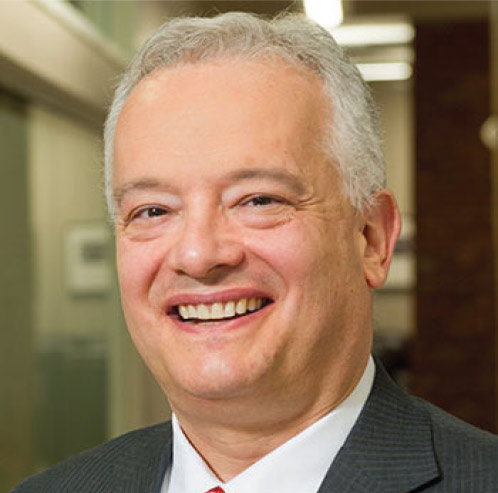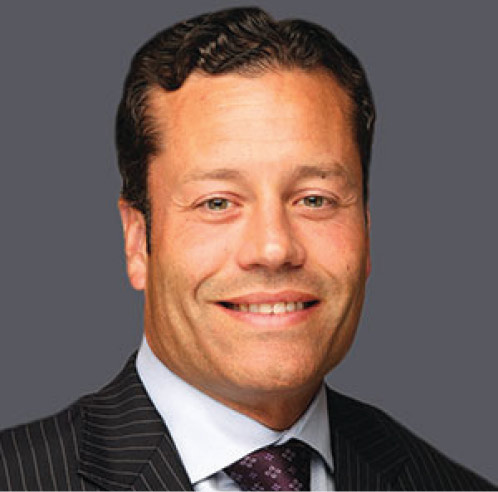2018: Has the Market Peaked?
STORY BY Mark Scott from Smart Business Dealmakers

Co-CEO, Resilience Capital Partners
It’s easy to look at dealmaking activity in 2018 and assume that sellers once again had a better year than buyers. Not so fast, says Bassem Mansour.
“This is the kind of question that’s best answered down the road,” says Mansour, co-CEO at Resilience Capital Partners. “If valuations continue their rise and buyers can sidestep the inevitable downturns in the market, then they will be the longterm winners.”
With more than $1 trillion in private equity dollars still waiting to be invested and more than $2 trillion in cash on the balance sheets of S&P 500 companies, it’s an exciting time to be a dealmaker — whether you’re an adviser, a buyer or a seller.

Chairman, Signet LLC
“We’ve never seen more money in the middle market,” says Signet LLC Chairman Anthony S. Manna. “Everyone we interact with in the dealmaking industry is busy. Attorneys, accountants, private equity, corporate development and investment bankers report being busier now than at any time in their careers.”
In our Dealmakers Year in Review, Mansour, Manna and other M&A experts weigh in on the past year in dealmaking including lessons learned, trends to watch and the biggest under-the-radar deals of 2018.
How would you describe Cleveland’s M&A climate in 2018?

President, Western Reserve Partners LLC
David D. Dunstan, president and managing director, Western Reserve Partners LLC: Greater Cleveland demonstrated strong M&A activity through November and is on pace to surpass 2017. This is consistent with the broader national M&A market.
The Cleveland area observed three large transactions:
The Forest City Realty Trust acquisition by Brookfield Asset Management, Bain Capital’s investment in Dealer Tire and the acquisition of Kichler Lighting by Masco Corp. (Western Reserve Partners represented Kichler Lighting in this transaction).
Private equity buyers aggressively pursued better performing targets, and strategic buyers continued to search for accretive acquisitions to invest their growing cash balances to fuel inorganic growth. These dynamics generated tremendous competitive bidding processes and record valuations in 2018.

Partner, Cyprium Partners
Beth Haas, partner, Cyprium Partners: One trend to note, particularly here in Northeast Ohio where traditional commercial banks have a large presence, is the continued rise of private debt funds. More and more of these debt-oriented funds are being raised, and the amount of capital being raised per fund is rising. Reports suggest that these vehicles have over $150 billion in dry powder to be put to work, making the competition to provide first- and second-lien debt to private equity-backed companies more intense than ever. This will likely continue to impact the LBO market by supporting high-leverage multiples and issuer-friendly terms, while also creating opportunities for companies to refinance existing debt on better terms.
Mansour: The M&A market, generally speaking and specific to our region, has continued to be strong. However, it has been dampened a bit by global factors including high valuations, uncertainty over trade, competition from strategic buyers flush with money from tax reform and a sense that the market is peaking. Those are some reasons why private equity overall has more than $1.1 trillion in dry powder. Many financial buyers are biding their time, concentrating on bolstering their current portfolio companies and — in the case of firms such as ours that focus on special situations — looking for opportunities that meet our investment criteria.
What’s an important deal that slipped under the radar last year?

Partner, RSM US LLP
Ron DeGrandis, partner, RSM US LLP: A deal that happened but is not completely developed is the Millennia acquisition of the old Huntington Bank Building, now renamed the Centennial. That will be a transformative project that will be the last piece of the puzzle for Euclid Avenue and probably only Frank Sinito can pull it off, since several have tried before. People are still looking to invest in real estate as an alternative deployment of funds, compared to their low-risk, low-return investments, in order to balance their portfolio.
Manna: Silversmith Capital out of Boston invested in locally owned MediQuant Inc. MediQuant is a high-growth health care IT company in Brecksville. Silversmith agreed to keep the company headquartered in Northeast Ohio and continue MediQuant’s high-growth momentum, through both organic initiatives and acquisitions. I think you’ll see MediQuant become a major health care IT company and employer in this region in the future.
Dunstan: The Aleris Corp. acquisition may provide insight into current international trends as tensions continue between the U.S. and China around trade and technology-related matters. Aleris had its deal with Zhongwang (of China) fall apart due to security concerns in 2017 and announced a new deal in 2018 with Novelis, a unit of India’s Aditya Birla Group. We expect to continue to see challenges consummating M&A transactions with Chinese firms. This limits opportunities for sellers that would otherwise target Chinese buyers, but opens up opportunities for other countries to participate in U.S.-based M&A transactions.
What were some of your biggest lessons learned this year? And which trends did you see that could have a lasting impact?
Manna: Exit multiples have been strong, and every deal seems to have a very competitive process with multiple buyers pushing up values. Buyers are seeing an unprecedented number of high-quality deals. The acquired companies tend to be in strong financial positions with both good growth history and growth prospects, putting them in very good positions for future success, in spite of higher acquisition costs.
Mansour: The flat returns year to date in public equities although changing by the minute — are a reminder that valuations remain key, and an indicator that we may be nearing a top in those markets as economic conditions reach a peak. Private equity, conversely, historically has been less responsive to economics and less volatile. The fact that so much dry powder has accumulated means that buyers have been discerning, and that may help private equity firms withstand the inevitable downturn in the economic cycle.
Dunstan: We continue to see private equity and strategic buyers strive to differentiate themselves beyond value.
These differentiating strategies include attractive purchase agreement terms such as representation and warranty insurance to eliminate any meaningful escrow; shorter diligence periods; eliminating financing contingencies; providing industry specialization; and including executives with operational expertise to assist in the growth and efficiency realization post-closing. Given the premium valuations being paid, both PE and strategic buyers will need real operational efficiencies and must achieve above-market growth rates to realize attractive returns on their investments.
Haas: Ultimately time will tell, but sellers did well in 2018. Valuations stayed high, in part because debt financing remained relatively inexpensive and very available. Many deals were done with aggressive debt structures — up to 6x EBITDA — and on seller-friendly terms. To the extent that interest rates rise, which I expect they will, and/or the economy slows down, buyers could find themselves in the uncomfortable position of having overpaid and being overly levered.
